Academic policy Paper Series, no. 12, June 2025
Russia's Politicized Law Enforcement and its Evolution
Alexander Verkhovsky
July 8, 2025
The objective of this article is to assess how the dynamics of what society and the authorities apparently understand as politicized law enforcement have changed in connection with the war in Ukraine. The three war years have their own, sometimes not at all obvious, dynamics and are noticeably different than the three prewar years. The approach of this article is to study the main quantitative trends in this period.
The discussion here will not only be about what is usually discussed as political repression. The word “repression” itself implies injustice, the illegal nature of the actions of the law enforcement machine. But if we exclude such assessments from consideration, we will see a certain set of legal instruments that the authorities use for their political purposes, and whether this activity corresponds to our ideas of justice and law is another question. Of course, the set of such instruments is very wide: in principle, cases of absolutely any kind can be politically motivated. But in practice, legal instruments specially designed to prosecute acts that are understood by the authorities – but most often by society as a whole – as politically or ideologically motivated are mainly used for political purposes. Therefore, if we look at the use of such core legal instruments, we will get a fairly complete picture.
These instruments are mainly grouped around the laws On Combating Extremist Activity and On Combating Terrorism. In Russian law, the extremist or terrorist nature of a crime is determined by its motive – whether it was committed out of political or ideological hatred or hatred toward a certain group or with the aim of influencing the state and society through violence. There are also official lists of extremist and terrorist crimes (SOVA, 2010a, b). For some reason, some clearly politicized Criminal Code articles are not included in these lists, but I will consider them. Some important instruments concerning treason and mass disorder deserve to be considered, but in the absence of our own research on these topics, we will have to limit ourselves to references to existing data. On the contrary, I will not consider some politicized instruments here, for example, those related to the laws on “foreign agents” and “undesirable organizations,” since their application has already been sufficiently studied and the extent of criminal prosecutions of this type is not so great yet (OVD-Info, 2024a).
Two geographical points need to be made. Crimea is not Russian territory from the point of view of international law, but by 2019, the year I begin my review with, it had not only long been under effective Russian jurisdiction but was also fully integrated in terms of law enforcement, so there is no reason to exclude it from consideration. The areas of Ukraine occupied by the Russian army since 2022 are a different matter. From the point of view of Russian law, they are part of Russia, but de facto integration had yet to take place by the time this article was finished, i.e., by spring 2025. Full-fledged martial law is in effect in these territories, and law enforcement there is in no way like what it is in the rest of Russia. In addition, politically charged law enforcement there is more a part of the war than a part of domestic policy. Therefore, I think it is right to exclude it from the general analysis. For the same reasons, I do not analyze the criminal prosecution of Ukrainian military personnel or Ukrainian government officials and journalists, including under those Criminal Code articles that are included in this review.
In this article, I rely on several large data sets. First, on official statistics on criminal convictions and decisions under the Code of Administrative Offenses that have entered into force (Judicial Department the Supreme Court, 2025). Second, the SOVA Center maintains a database that is publicly available for analysis (with the exception of some elements discussed below) and concerns both hate crimes and a significant part of politicized law enforcement (SOVA, 2025a). Third, OVD-Info, an independent Russian human rights media project aimed at combating political persecution, maintains a large array of open data on law enforcement (OVD-Info, 2025), based on which it publishes its reports – the latest at the moment is on political persecution in 2024 (for January-November) (OVD-Info, 2024a). We stress that the SOVA and OVD-Info databases are far from complete, but they are still large enough to make quantitative estimates when the data is compared with official data, which is complete but has a big lag. Fourth, there is data from court websites provided to us by OVD-Info: it is not entirely complete, but large arrays of data are obtained on administrative cases, allowing for fairly accurate estimates. Finally, large arrays of data were analyzed by some publications like Mediazona and Novaya Gazeta Europe, and we sometimes rely on published generalizations based on this data.
The article is to some extent a continuation, correction and development of the one that Natalia Yudina and I published last year (Verkhovsky & Yudina, 2024). I am grateful to her for her help in collecting information for this article.
Prosecution for speech
Prosecutions for public speech traditionally attract the most attention. Criminal cases of this type, compared with other types of criminal prosecution that interest us in this article, have been the most numerous since 2012. Politicized prosecution for administrative offenses is part of this and much larger in scale.
Note that almost all widely used politicized norms in the Code of Administrative Offenses are now part of the mechanism of administrative prejudice: a repeat offense within a year can be considered a criminal offense. This gives much more credibility to administrative penalties as a method of intimidation or, if you like, prevention.
Criminal cases. An overview
Criminal enforcement of public speech ranges from punishing clearly innocent people to prosecuting those who would likely be criminally prosecuted in any democratic European society.
The most common charges in recent years are calling for terrorist activity or justifying it. Here it is important to consider three circumstances that are important for law enforcement. First, in cases of public speech, especially under this article, the investigation and the court pay very little attention to the real public danger posed by the speech in question, focusing their attention on the formal compliance of what was said or written with the Criminal Code article. Second, many military actions of the Ukrainian army are classified as terrorist attacks, which entails prosecution under this article of people who have expressed positive opinions about such actions. Third, “terrorist activity” in this article implies not only terrorist attacks as such but also other actions, like participation in groups banned as terrorist organizations and propaganda of what is vaguely defined as the “ideology of terrorism.”
The next most common charge is public calls for extremism. Given the extreme breadth of the definition of the latter, the “popularity” of this article is not surprising.
The criminal articles introduced at the beginning of the big war on “fakes” about the army and “repeat discrediting of the army” (“discrediting” entails an administrative fine the first time) are applied less frequently.
Even less frequently, but also on a noticeable scale, the article on incitement of hatred is applied (with aggravating circumstances or for repeat incitement), and hatred can relate to both racial, ethnic and similar groups, as well as to such “social groups” as government agencies, law enforcement agencies, the army and so on.
In recent years, the article on “rehabilitation of Nazism” has become widely used. Due to its broad, eclectic and not always clear composition, this article is used both against those who actually justify or deny the crimes of the Third Reich and against those who insult certain patriotic symbols, including for completely nonideological reasons.
There are also a whole series of other articles, including religious blasphemy, calls for sanctions, etc. For example, the article on repeat demonstration of prohibited symbols is most often applied not to ideological opponents of the regime but to those who display criminal symbols (tattoos, etc.).
Table 1. Number of convictions for select Criminal Code articles (official data)

The investigation of a criminal case of this type, from the moment of initiation to the entry into force of the conviction, can often last a couple of months, assuming the case is uncomplicated and the convicted person admits guilt and agrees to the so-called special procedure for adjudication of the case. But the investigation can last two years. Analysis of SOVA Center data for different years showed that the average duration is about a year. It seems that in the most recent years, the average duration has been gradually decreasing, but the number of convicted persons in each year still tells us more about the activity of opening cases in the previous year than in the current one. Therefore, it is reasonable, understanding the inaccuracy of this method, to judge the number of cases opened in one year by the number of convicted persons a year later.
As for the overlap of Criminal Code articles in sentences, we can estimate it annually based on the data on sentences that the SOVA Center has, and this is about half of convictions, and we extrapolate this to the entire array – there is no reason to think that the cases known to us differ from the rest in this regard. The SOVA data is corrected in two stages. First: we know the total number of people convicted for speech in each year and the data on individual Criminal Code articles on speech, which allows us to figure out for each year the share of overlap of different Criminal Code articles on speech in these convictions. We apply this coefficient to the total of the official number of people convicted under these articles for both the main (i.e., more serious) and additional charges and obtain an estimate of the real number of people convicted for speech. Second: we know in the SOVA data for each year the share of people convicted for speech who also had charges of other types (violence, etc.). By applying these coefficients, we obtain for each year an estimate of the number of people convicted for speech alone.
As early as 2023, the total number of cases for speech exceeded a thousand, and approximately 90% of them were only for speech. It is harder to estimate the number of cases in 2024.1 We have fairly reliable data from court websites only for January-February 2025, but these months are always very different from others, which makes extrapolation almost impossible. We can rely on the data collected by the SOVA Center on new cases in 2024, but the problem is that the SOVA Center’s knowledge of new cases varies from year to year. There is reason to believe that it has expanded somewhat, as in the previous year, but it is not known, of course, by how much. If we preliminarily assume that it has grown about the same as in the previous year, then the number of cases for speech in 2024 was almost no different from the number of cases in 2023. But this is only a very rough estimate.
The sharp increase in 2020 is striking. It marked the biggest rise in cases for speech in the entire period of our observations: cases for speech alone more than doubled and those for all speech cases rose 80%. Apparently, this was a reaction to the widespread opposition rallies, as well as to the “constitutional reform” that changed political regime.
The war year of 2022 brought a 17% increase in the number of cases for public speech and an 11% increase for speech alone. The decline in this type of prosecution in 2018-19 was “compensated for”: the overall figures slightly exceeded those for 2017. But this increase was almost the same in percentage terms as in 2019 or 2021. This means that 2022 did not bring such a sharp increase in criminal cases for public speech as one might have expected and as everyone thought at the time. This discrepancy between public perception and statistical reality, however, can be easily explained by four factors: the general emotional shock after February 24; the addition of new Criminal Code articles that clearly contradict the Constitution; truly large-scale administrative prosecutions, which will be discussed below and which society did not always clearly distinguish from criminal prosecutions; and, of course, the fact that many of the defendants in the 2022 cases were much more famous than those in criminal cases about speech usually were before.
Table 2. Estimated number of new public speech cases

But 2024, though we have only a preliminary picture, appears to be a year of stabilization for this type of law enforcement.
The distribution of punishments in convictions handed down for public speech has also changed noticeably. Here we can rely more on official data from the Supreme Court, which is available, however, only for the main article of the charge. The chart below takes into account all articles on speech, as well as repeat demonstration of prohibited symbols and articles on religious blasphemy and on attacks on “symbols of military glory” – these articles in some cases describe acts of vandalism, but it is impossible to single out these cases in the official statistics, and such acts are still a form of speech (albeit sometimes done unwittingly).[1]
[1] Article 354.1 of the Criminal Code is called Rehabilitation of Nazism, but this name is very misleading and describes only a small part of the real composition of the article.
Table 3. Convictions as ratio of actual imprisonment

The ongoing increase in the share of imprisonment in the entire mass of sentences for speech is achieved because of other articles, like incitement to hatred, “fakes” about the war, repeat discrediting of the army and repeat demonstration of prohibited symbols. Note that many sentences for “fakes” are handed down to people who have emigrated, while for symbols the sentences are given mainly to prisoners who have demonstrated symbols that are classified as belonging to the prohibited movement called Prisoner's Criminal Unity (AUE).3
The prison terms to which people are sentenced for speech are also becoming more severe. Unfortunately, they can be assessed only based on data from the SOVA Center. If we count those convicted only for speech, without other charges and exclude abnormally harsh sentences (there are almost no sentences of more than 10 years of imprisonment for speech alone), then the proportions of those sentenced to different terms are distributed as follows:
Table 4. Shares of prison sentences, % (excluding unusually harsh sentences)

In the first two decades of this century, the main targets of politicized law enforcement were, firstly, Russian nationalists and neo-Nazis and, secondly, “radical Islamists.” Of course, the authorities could sometimes have a rather bizarre understanding of these categories. Meanwhile, left-wing and especially liberal groups became targets much less often. Even the unprecedented increase in the number of speech cases in 2020 did not change this fundamentally.
Truly serious changes began only in 2022: the wartime situation radicalized political criticism in all political corners, while new norms were quickly introduced into the Criminal Code and the Code of Administrative Offenses, criminalizing even peaceful criticism.
Let us try to assess to what extent since then the prosecution for public speech is aimed precisely at what is inaccurately called “antiwar speech”: many do not speak out against the war from a pacifist or dovish position – they are rather supporters of Ukraine in the war and directly called for military or sabotage actions.
We do not know the content of the criminal charges in all cases. Only in cases of “fakes” or “discrediting” is there no doubt that the case was about war. If we take only those cases where the SOVA Center had at least partial information about the content of the speech in question, in 2022 about 40% of cases opened were about war. In 2023-24, this share increased significantly, to about 50%.
Since 2023, SOVA has been maintaining a classification of convicted persons by their ideological orientation, which is rather rough, of course. This classification is not public, since we do not want to make insufficiently precise and evidence-based statements of this kind about specific people. But we ourselves can use these assessments in aggregate form.
We singled out Russian nationalists (in all their diversity, from moderates to neo-Nazis), nationalists of other ethnic communities, militant Islamists, Citizens of the USSR,4 people convicted for AUE, liberals, etc. But the largest category in 2023 and 2024 was opponents of the war and/or the political regime who could not be ideologically classified: 160 out of 302 convicted in 2023, 256 out of 397 in 2024 (as of March 22, 2025). They are followed by Russian nationalists, with a very large gap – 50 convictions in 2023 and 43 in 2024. Then come militant Islamists (24 and 14, respectively). There are even fewer of the rest, not counting AUE.
Another approach is to look at the objects of hostility or criticism in the incriminated speech when they were known to SOVA (this is also unpublished data). Obviously, there could be several objects of hostility in a single case. In the 2024 convictions, where we had such information at the beginning of February 2025, the army and the military were encountered in almost a third of the cases (121 defendants), followed by Russia as a whole in connection with the war, as a country, society or a group of citizens (73), the Russian government (51), Putin personally (24) and so on, while the entire set of ethnically defined objects of hostility had no more than 50 cases (in first place among them were Jews with 13 cases).
It is also necessary to note the norms of the Criminal Code that, in their essence, are intended primarily not to punish unacceptable acts but to protect values of society – of course, as the authorities see them. In all these cases, it is important not only to punish the criminal but also to inform society about it as widely as possible, because the protection of values, if it is poorly visible to society, is meaningless.
The most common example is the criminalization of desecration of the national flag. The criminalization of blasphemy should also be included in this category: unlike incitement to hatred of certain groups of believers, this norm does not protect them; it is meant to protect certain ideas that the state considers important for unity or stability. The same can be said about the criminalization of “historical revisionism.” In the Russian case, the norm on the denial of Nazi crimes, called “rehabilitation of Nazism” in the Criminal Code, has acquired additional norms unrelated to Nazism that protect patriotic symbols, including even veterans of World War II personally. The norms on “discrediting” and “fakes” about the army also belong to this category – the actions of the accused could only harm the values of society.
The application of the last two norms is directly related to the war and is aimed at suppressing criticism of the authorities. The need to counter such criticism also determines the “level” of law enforcement, and in 2024 the number of cases opened has significantly decreased, especially for “fakes” (OVD-Info, 2024a). But these cases are also important for the propaganda of national unity in the face of the enemy.
If we look at the application of the criminal article on blasphemy, known as the article on “insulting religious feelings,” in the 2010s this was limited to ten convictions a year, often much fewer, like in 2019-20, when there were 2-3 each year. But in 2021-23, there were already a dozen and a half convictions a year, followed by 43 in 2024. Blasphemy cases are noteworthy in two more respects. First, the acts themselves are often completely insignificant in essence, but they are written about quite a lot in the media. Second, the investigation of an unusually large (for today’s Russia) share of these cases is closed after apologies are issued. Imprisonment is almost never applied (in the absence of other charges).
The article on the “rehabilitation of Nazism” protects the values and symbols of the civil cult of the Soviet victory in World War II, the significance of which in the ideological web of “traditional values” is undoubtedly very high.5 The increase in the application of this article began in 2020, synchronously with the constitutional reform, which was partly ideological in nature – from two convictions in 2019 to 73 in 2023. True, in 2024 there was a slight decrease. Among those convicted, there are people who actually denied or approved of the crimes of the Nazis. There are also those who criticized (often falsely) Soviet policy during World War II. But there are even more people who committed acts of petty hooliganism in connection with patriotic symbols, often clearly without an ideological motivation (there are also a number of cases of homeless people being punished for using the “eternal flame”6 simply as a source of fire), or who simply joked about these symbols. Since 2022, those who in one way or another encroached on patriotic symbols, primarily the St George’s ribbon7, to express their negative attitude toward the Ukraine war have been convicted under this article. All these cases are relatively widely covered in the media. Some are opened for trivial reasons, though clearly not as large a proportion as in cases of blasphemy. There are very few closed cases under this article and imprisonment has become quite common in 2022-24: 37-38% of cases.
Administrative cases
Law enforcement under the “political articles” of the Code of Administrative Offenses is extremely broad. With moderate penalties, these sanctions are aimed rather at intimidating offenders, real or only perceived as such by the authorities. It is important that for a number of offenses, including the most widespread – on prohibited symbols, incitement to hatred and discrediting the army – a repeat violation within a year already entails criminal liability.
The scope of law enforcement under administrative “political articles” is relatively easy to evaluate. Data on this is published by the Supreme Court. However, in addition to a significant lag in publication, a significant shortcoming has appeared in these statistics since 2022: for some reason, data on articles on prohibited symbols and on incitement to hatred are given in sum. But we can turn to data from court websites, which are now published article by article and are surprisingly complete. This allows us to break down the data aggregated by official statistics.
In general, the available data allows us to give estimates on the main Code of Administrative Offenses articles that interest us: on prohibited symbols (20.3), on incitement to hatred (20.3.1), on discrediting the army (20.3.3) and on prohibited materials (20.29). There is also a norm on indecent statements addressed to the authorities and the state (parts 3-5 of Article 20.3.1) – application of it is gradually growing, but in 2024 there were, apparently, fewer than 200 decisions, and there is no official data. The other Code of Administrative Offenses articles used in political law enforcement (on calls for separatism, on calls for sanctions and on comparing Stalin’s and Hitler’s crimes) yield in total, judging by the data of the Supreme Court, only about 50 decisions per year.
Table 5. Punishments under the main Code of Administrative Offenses articles

This chart also clearly shows how the article on “discrediting,” which took off in March 2022, is gradually being used less and less. The use of the article on dissemination of prohibited materials, which is increasingly less needed by the authorities (instead, online blocks are widely practiced), is also declining. The frequency of charges for incitement to hatred, which has been increasingly used since being introduced into the Code of Administrative Offences in 2019, has stabilized since 2022 (with a small dip in 2023). And finally, the most “popular” article, except for 2022 – on prohibited symbols – continues to grow more or less steadily, even without AUE. Judging by the data for 2024, this method of intimidation is now the most preferred.
Who is being targeted?
It is difficult to say against whom, in a political sense, such a large volume of law enforcement actions is directed, because the overwhelming majority of those punished are unknown except for the fact of being punished. However, since 2023 the SOVA Center has been keeping records of administrative punishments known to it under three Code of Administrative Offenses articles – on prohibited symbols, prohibited materials and incitement to hatred – in terms of the content of the incriminated speech.8 In total, SOVA classified almost 1,300 decisions for 2023 and about 1,850 in 2024. This set does not include the article on discrediting the army, since the content of these cases is self-evident.
We can even classify the application of these articles separately (Kravchenko & Yudina, 2025). For example, the article on prohibited materials can be broken down by the ideological content of the materials. Materials of neo-Nazis and Russian nationalists undoubtedly dominate, at about 44%. Materials of Islamists, both militant and not, turned out to be not comparable, at about 14% in 2023, which rose to 24% in 2024. Prohibited symbols can be considered in approximately the same way. Here too, Nazi, neo-Nazi and similar symbols undoubtedly dominate, used as a means of agitation, at least presumably, accounting for about 50% of cases in 2023 and slightly more than 40% in 2024 (there are also cases when such symbols are used as a tool of political criticism from clearly not ultraright positions, but such cases were 5% and 2%, respectively). The second place is occupied by the apolitical symbols of AUE. Trailing them, but on an upward trend, are Ukrainian symbols and symbols of Russian units fighting on the side of Ukraine: 8% in 2023 and 14% in 2024.
It is reasonable to classify cases of incitement to hatred by the objects of such hatred, remembering that there are often several in one case. The share of ethno- and xenophobic speech has grown noticeably: from 55% to 70%. In 2023-24, people associated with Central Asia or the Caucasus and migrants undoubtedly dominate as objects of hatred. But in 2024, within the category of ethnic hatred, 15% went to Jews and 13% to Russians and residents of Russia in general. Religious hatred, across all objects of such hatred, is not comparable, at less than 7%. A significant place, but not nearly as significant as in criminal law enforcement, is occupied by political hatred directed against siloviki, bureaucrats, Putin personally, the government in general. Their share as an object of hatred is stable: 24% in 2023 and 22% in 2024.
The categories for the four different articles can only be summed up approximately due to the insufficient granularity of the original classification.9 Yet it is still possible to do so for 2023-24. The share of speech hostile to the authorities (more than three quarters of which was pro-Ukraine) was 40-41%, exceeding the share of ethno- and xenophobic speech, which was 34-35%. The shares of AUE (16-17%) and religious hatred (3%) are much smaller and also have remained virtually unchanged. Note that this is a classification not of the political views of individuals but of the political orientation of law enforcement.
Criminal cases against extremist and terrorist organizations and groups
It is not possible to conduct the same quantitative analysis here as for prosecutions for public speech. From the point of view of data processing, this is due to two important differences. First, until recently, according to our data, the duration of the investigation of cases of this type clearly exceeded a year, while now, apparently, it has significantly decreased, which excludes the calculation of the number of cases based on convictions the following year. Second, unfortunately, the awareness of the SOVA Center fluctuates greatly in terms of the Criminal Code articles used, in terms of the organizations prosecuted and in terms of years, which excludes the possibility of filtering official data based on SOVA data, as we did above.
Table 6. Number of convictions for select Criminal Code articles (official data)

It is therefore impossible to construct a reasonable graph of the number of cases of this type being opened – only a graph of sentences handed down is possible. The articles of the Criminal Code for acts of this type practically do not overlap in the convictions, except for the article on financing extremism, so it is possible to estimate very accurately the total number of those convicted based on the by-article data of the Supreme Court.
Table 7. Convicted individuals for participation in extremist and terrorist organizations and groups

The chart below shows the number of cases known to SOVA Center as of January 2025 for participation in banned organizations or groups (only those that have led in recent years in the number of criminal cases for participation in them). At the same time, many of the defendants were also charged with other charges, like vandalism for ideological reasons, public speech, etc.
Table 8. New cases against select groups (known to SOVA Center)

The largest campaign of persecution of this type, against Jehovah’s Witnesses, reached its peak in 2019, with 213 cases. Then we see three sharp declines: in 2020, 2022 and 2024. The first of these was the year of the sharpest increase in the number of criminal cases for speech, the second – the first year of a major war and the third did not coincide with any comparable event and, perhaps, is partly explained by a lack of information. Jehovah’s Witnesses and the campaign against them are in no way connected with the war itself, since this religious movement is fundamentally apolitical and does not speak out on this issue.
No less impressive is the picture with the persecution of the Islamist party Hizb ut-Tahrir, which used to account for the majority of cases under the relevant Criminal Code article: we again see two decreases in 2020 and 2022, but there is no noticeable trend after that. While one can see a direct connection with the conflict with Ukraine, as many of the cases – indeed, the majority in recent years – are conducted against real or alleged party members in Crimea, and these people are part of the Crimean Tatar opposition to Russian power in Crimea.
The significant number of cases against various groups of the Citizens of the USSR movement is noteworthy. They are persecuted for systematic calls to overthrow the current government, anti-Semitic agitation and more. The first ban on one of the Citizens of the USSR organizations in 2019 gave rise to a surge in cases for continuing its activities the following year. The peak of persecution of Citizens of the USSR came in 2023. Some of these cases are related to criticism of the war, but not all of them.
These Criminal Code articles were not used against the liberal opposition until persecution of members of Alexei Navalny’s organizations began in 2021. Some of the group cases since 2022 are related to antiwar protests, and this applies not only to Navalny supporters: the case of the youth organization Vesna was of peak importance.
Finally, since 2022, the number of cases against people accused of collaborating with Ukrainian nationalist organizations that are banned in Russia has predictably increased, usually with Right Sector (banned in 2014) and later with the Azov Regiment (banned in 2022), while others are mentioned much less frequently. The formal side plays a major role here: the organization must first be banned, and this has caused delays that are not entirely explainable from a political point of view. Much later, charges were brought against Russian citizens for collaborating with Russian groups fighting on the side of Ukraine, like the Freedom of Russia Legion and the Russian Volunteer Corps (RVC), banned only in 2023 (we took into account neither cases against members of these groups already fighting on the side of Ukraine, nor cases against Ukrainian citizens themselves in Ukraine, since these cases are conducted more for the sake of propaganda than for the sake of real justice; cases about speech somehow related to these organizations are accounted for in another section). The total number of cases in 2023-24 turned out to be at least 70, but most likely there are significantly more. Some of these cases are the result of a provocation; in other cases there was no real intention to go over to the Ukrainian side.10 The fact is that an unusually large number of convictions were handed down under the article on participation in terrorist organizations in 2023, and we know nothing about a huge chunk of them at this point. In 2024, it is not as bad, but still quite a lot. Most likely, among the cases unknown to us there are those surrounding people’s intention to join the Legion or the RVC.
The line of law enforcement aimed at countering Russian far-right groups has not disappeared. It has always been one of the most important in anti-extremism policy. The peak of such cases in 2021 is a consequence of raids on far-right individuals connected in one way or another with the network project “Maniacs. Cult of Murder” (MKU). Amid an intense propaganda confrontation with Ukraine that year, MKU was presented as part of Ukrainian influence, as the founder of MKU was a Ukrainian citizen. But MKU was not pro-Ukraine: this network was just about racism and misanthropy and completely indifferent to the conflict between Russia and Ukraine. We see that in 2022 and 2023, the number of cases of participation in far-right organizations unrelated to Ukraine fell to almost zero before rebounding to normal levels. But it is necessary to stipulate that far from all group cases against the far right included legal qualification under the Criminal Code articles considered in this chapter, so these figures do not reflect the real scale of counteraction against far-right groups (see below in the section on hate crimes).
It remains to note the cases started in 2024 against members of the fictitious yet banned “international LGBT movement.” All of them, before 2025, were not against LGBT activists but against managers of clubs and other commercial projects. It is difficult to say how this practice will develop further.
Moreover, it is still impossible to say what the criminal prosecution of ethnic-minority nationalists and regionalists will be for “participation” in organizations from two large ban lists in 2024 – the fictitious “separatist movement” (de facto most of its “divisions” are the Free Russia Foundation and a number of its partners) (SOVA, 2024b) and the real Free Nations of Post-Russia Forum, (SOVA, 2025b) which was said to include groups that were not related to it or did not exist at all.
The above chart does not show recently less energetic efforts at persecution of various religious and political movements. At the same time, it lacks two quantitatively significant ones.
The first is the prosecution of criminal bosses or entrepreneurs as participants in the “AUE movement.” We do not have proper data on the number of cases being opened, but even the dynamics of sentences handed down indicate that this (absolutely nonpolitical and nonideological) effort is very significant. The number of people convicted in cases of participation in AUE increased to almost a hundred in 2024, but this is clearly incomplete data.
The second effort is the persecution of actual or at least supposed militant Islamist groups and organizations. It has not ceased all these years. Unfortunately, no one conducts targeted monitoring of this law enforcement effort, and we cannot even approximately estimate its dynamics.
Let us also concern ourselves here with how the severity of sanctions has changed. Since the relevant terrorism Criminal Code articles do not provide for punishments that are not imprisonment, it makes sense to look only at the relevant extremism articles.
Table 9. Convictions as ratio of actual imprisonment for participation in extremist organizations and groups

Let us estimate, again only according to SOVA Center data, what terms of imprisonment were assigned in the convictions. To do this, we need to subtract cases where there were other charges of serious crimes, like terrorist attacks, planned terrorist attacks, attempted murder, etc. I also completely excluded all cases related to AUE: first, they are not political whatsoever; second, in these cases we are most often talking about an addition to a prison sentence already served.
I excluded unusually lenient sentences, up to a year inclusive or unusually harsh sentences, over 20 years. They were rare in this sample: the former occurred no more than four times a year, and the latter no more than three times a year.
Table 10. Shares of prison sentences, % (excluding unusually lenient and harsh sentences)

Cases for treason and sabotage
The human rights organization Department One systematically collects data on cases for treason and espionage. Its latest report, published at the very end of 2024, (Parubets, Tsybulina & Zagovora, 2024) shows that since the beginning of the big war, the three relevant Criminal Code articles have been used mainly (about 60% of cases) not for espionage (even on behalf of Ukraine), but for other cooperation with Ukraine, attempts to join the Ukrainian army, sometimes for sabotage activities such as attempted arson of military commissariats or railway infrastructure. It was not possible to figure out the exact number of cases, but they are definitely already in the hundreds per year (at least 300 in 2024, according to Department One). About a third of them were decided by courts in the DNR, the LNR and Crimea. The number of convictions and sentences are growing rapidly, as is the speed of decisions. All this is quite expected in a wartime situation.
The number of violent attacks against the state in a wartime situation is quite high, at least for Russian political culture. The legal classification of such actions varies widely, from damage to property to terrorism. The number of terrorism cases, according to official data on convictions, has been steadily growing since 2022 (among these cases there are many unrelated to the war, but sentences related in one way or another to the ISIS attacks of 2024, which are potentially high in number, have not yet been handed down).11 At the same time, there is an important distinction to be made among the accused: some committed or at least intended to commit their actions out of ideological motives, for example, in support of Ukraine, but others acted under the influence of scammers, apparently from Ukraine, who offered them money, deceived them or blackmailed them. The SOVA Center has no information on the quantitative ratio of these two categories or on how the severity of the sanctions against them compares. But such data was analyzed by Mediazona: according to the data it collected on attempts to set fire to or blow up military commissariats or other administrative buildings, in 2022 sabotage of this type was more often committed for ideological reasons instead of under the influence of scammers (71 versus six cases), before the situation did a one-eighty in 2023 (21 versus 89) and even more in 2024 (one versus 92). (Note that there were another 105 cases in these years where the real motivation was unknown.) Victims of scammers are sent to prison almost three times less often than ideological saboteurs – but still in almost 30% of cases (Romashova, 2025).
There are, of course, still numerous cases of sabotage on the railways (OVD-Info indicated 84 such cases in 2024 (OVD-Info, 2024a)) and others, but even there, judging by media reports, a considerable and growing share is made up of victims of scammers.
Countering hate crimes and mass disorder
An important part of anti-extremism norms is the application of more severe sanctions to hate crimes, i.e., to ordinary criminal offenses that are committed because of hatred, be it racial, religious, political, gender-based and so on. In almost all cases, these are violent crimes and attacks on physical objects (usually called vandalism). In Russia, there are no official statistics on such crimes or prosecutions of them. Therefore, here we rely only on SOVA Center data. It is incomplete to a significant extent, but we can still speak relatively confidently about the prevailing trends.
The average duration of the investigation (preliminary investigation and trial) for ideologically motivated violent crimes against a person, according to our calculations, is about a year, so we can roughly estimate the number of suspects based on the number of those convicted in the following year.
But for 2024, we can only count the new cases that we already know of, and this method of counting is not like the last one, since our information is very unstable, and group cases are often investigated for a very long time. Therefore, this chart line below is not extended to 2024.
But one cannot help but notice that in January 2025 we already knew of 70 suspects for violent crimes in 2024 and in spring 2024 we knew of only 19 for 2023, while a year earlier it was 34 (Yudina, 2025). This means the number of suspects should definitely rise for 2024.
Table 11. Violent hate crimes and new cases for them

Yet even here things are not so clear-cut. If we consider the convictions for violent hate crimes known to the SOVA Center, in 2023 almost all of them where it was possible to identify the ideological orientation of the convicted were issued against Russian nationalists – 30 out of 33. In 2024, the picture is radically different: out of 60 ideologically identifiable convicted persons, only 20 are Russian nationalists, another 10 are other nationalists and 28 are participants in the anti-Semitic riot at the Makhachkala airport (the first sentences in this major case). In other words, the sentences of 2024 show that since 2023 the authorities have paid serious attention to other segments of street violence. If we exclude the unique Makhachkala case, this is, very roughly speaking, violence by ethnic-minority activists. The news flow of 2024 only confirms this hypothesis: as the government’s antimigrant campaign unfolds, the authorities see a threat of violent actions from ethnic minorities, not only from migrants; For some stories that suggest this, see (Alperovich, 2025).
It is more problematic to construct a similar chart for vandalism and prosecutions for it, since the SOVA Center takes into account only serious damage to physical objects, while the state also prosecutes minor actions, such as individual inscriptions of ideological or political content on walls, acts of nonideological hooliganism in connection with a variety of important physical objects, among which memorials such as the “eternal flame” stand out, and even manipulation of images of memorials. With the beginning of the full-scale Russian invasion of Ukraine, cases of damage to or defacement of images glorifying the special military operation and the St George ribbon were added.
Quantitatively, the fight against “vandalism” in the range from real attacks on physical objects to humorous actions with pictures is represented in the below chart, if we count the sentences known to the SOVA Center.
Table 12. Sentences for hate crimes against physical objects

Here, it is probably necessary to mention such a target of politicized law enforcement as “mass disorder,” though legally it is not always qualified as “crimes of an extremist nature.”
The Criminal Code article on mass disorder is applicable primarily to events that have nothing to do with politics or ideology, such as actions by soccer hooligans. For example, the leaders of the 2019 protests in Ingushetia, which were accompanied by clashes with the police, were convicted without this article being applied (Memorial, 2024). The mass demonstrations that Alexei Navalny and his supporters organized at the turn of the 2010s and 2020s were sometimes accompanied by minor clashes with the police (we are not considering the unilateral use of force by the police here), but this clearly did not reach the scale of “mass disorder,” and the authorities almost never applied this Criminal Code article. For example, following the largest prewar protests in the winter of 2021, about 140 people were brought to criminal responsibility, many were accused of violence against police officers, but only three were charged with participating in “mass disorder” (OVD-Info, 2021).
The first major application of Article 212 of the Criminal Code, specifically as an anti-extremism article, i.e., taking into account the motive of hatred of the accused, was the case of riot at the Makhachkala airport in October 2023. Sentences for this case began to be handed down in 2024 and continued in 2025 (SOVA, 2025c). About 150 people were accused, not counting the more than 900 who were punished administratively (Caucasian Knot, 2025).
The second example was the case of clashes with police in two cities of Bashkortostan in early 2024, which happened amid protests against the arrest of a Bashkir nationalist leader. About 70 people are being investigated (OVD-Info, 2024b).
Overall, it must be acknowledged that the Russian authorities use this instrument only in special cases.
Limited resources and priorities for law enforcement
Law enforcement agencies spend very large resources on cases directly related to the war, like sabotage and terrorist attacks, real attempts to aid Ukraine by joining its army or spying, etc. We do not include here “fakes” about the army and similar acts, the fight against which is still related to domestic politics and not to the war itself. Even in the war-related part of law enforcement activities cases are still artificially inflated for the sake of scoring points, but the increasingly protracted war objectively increases this part of the work of the law enforcement system.
Quantitatively, this focus of law enforcement became very large in 2024, with more than 300 cases of treason and espionage (including the DNR and LNR), more than 150 new cases of all kinds of arson and bombing (including attacks on the railways) (OVD-Info, 2024a) and an unknown number of cases of attempts to join the Freedom of Russia Legion and similar armed groups (besides the two previous categories). We conclude this because we believe our information to be significantly incomplete. Overall, this is already quite comparable to the number of essentially domestic political prosecutions for participation in banned organizations and quite possibly even exceeds it, if you believe the downward trend according to the Supreme Court. The war “portfolio” of law enforcement lags, however, prosecutions for public speech.
That said, a considerable part of the latter refers to public approval of military actions in favor of Ukraine. Thus, the authorities see a “fifth column” that this time is more real and not an empty propaganda cliché of previous years and are trying to suppress it as much as possible.
Many cases are being investigated against captured Ukrainians – soldiers and de facto civilians who are being consider soldiers – as well as citizens of third countries fighting for Ukraine. They are accused of war crimes, terrorist acts, espionage, etc. (apparently, a significant proportion of the abovementioned unusually high number of espionage cases has to do with Ukrainian citizens who lived in territories that fell under Russian jurisdiction). I have no data on the dynamics of new such cases that were opened, but one way or another all these cases are being conducted and require resources of the law enforcement system.
Not so large, but tangible resources are also being spent on purely symbolic – at least at this stage – cases against Ukrainian soldiers, government officials and journalists in Ukraine. In the foreseeable future, there is no real prospect of punishing these people, who are accused of terrorist attacks, propaganda of terrorism, etc., but politically these cases are viewed, judging by their number (we are talking about hundreds of them), as important.12 Similarly, many criminal cases on “fakes” (as well as on violation of “foreign agent” legislation, but not on “repeat discrediting”) are initiated against people who have already left Russia. In 2024, it was more than a third.
At the same time, over the past three years, the number of cases involving public speech, participation in various groups, and hate crimes has increased significantly. Real incidents of mass disorder have happened. In 2024, the amount of work to identify jihadist (real or suspected) groups has undoubtedly also risen.
Politicized law enforcement cannot work without specialized operational units of the Ministry of Internal Affairs, the FSB and the Prosecutor’s Office – at least for criminal offenses and related serious administrative offenses, as well as banning organizations and materials, etc. But these units are not that big. There is no information that they have expanded in recent years. Even if they have expanded, their total amount of work has increased multifold since the beginning of the 2020s. They are seriously overloaded, which cannot but lead to a decrease in the quality of investigations (here I mean criteria of quality within their organizations, not legal criteria) and are forced to curtail their work in some areas.
This shrinking is very noticeable in the example of persecution of Jehovah’s Witnesses and some Islamist groups. This, of course, does not mean that religious persecution using anti-extremism tools has ceased, but its volume has generally decreased during the war years. Indeed, a pullback was seen in 2024 in the focuses of politicized law enforcement that were most common during peacetime, public speech and participation in various groups. In some aspects, we have seen a quite noticeable decrease.
That said, besides the “war focus” itself, mass disorder and any ideologically motivated violence (except for state violence, of course) are being actively prosecuted. Calls for terrorism or justification of terrorism make up about half of the cases for public speech, while calls for violence against the government can be seen in other criminally punished speech too. The fact that in many – even in most – cases, the public danger of these calls is very small only underscores the position of the authorities: criticism is persecuted with varying degrees of regularity, but calls for violent actions against the government are met with zero tolerance.
The priorities of politicized law enforcement in wartime are thus the suppression of any actions in support of the enemy and the demonstration of intransigence toward even the most preliminary steps toward a real attempt at destabilizing or changing the political regime. Quite noticeable but secondary are measures of pressure on those who criticize the regime in connection with the war or seem to be associated with political movements critical of the war, as well as on Russian and other nationalists. Pressure on religious minorities and other groups that are deemed undesirable by the authorities came in third place.
-
Alexander Verkhovsky
Sova Research Center
